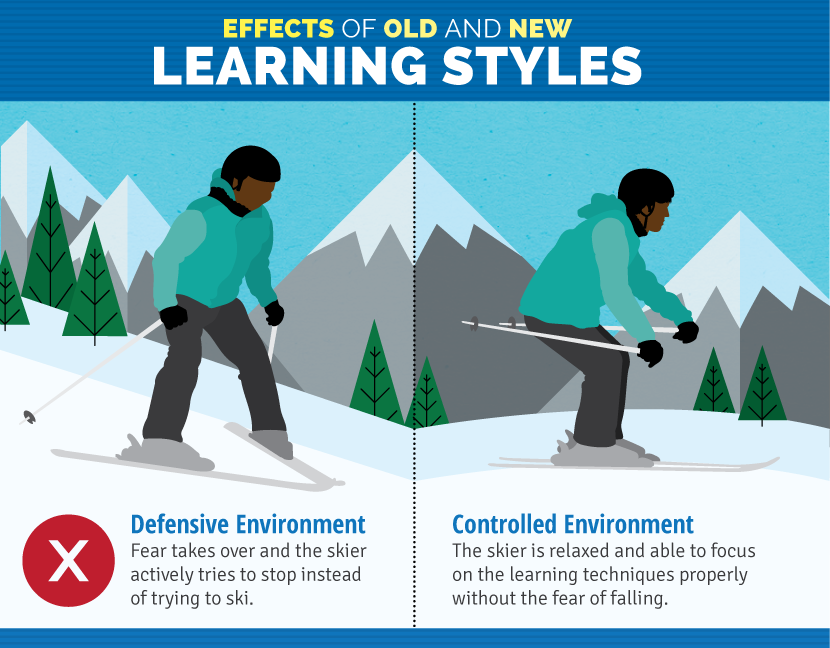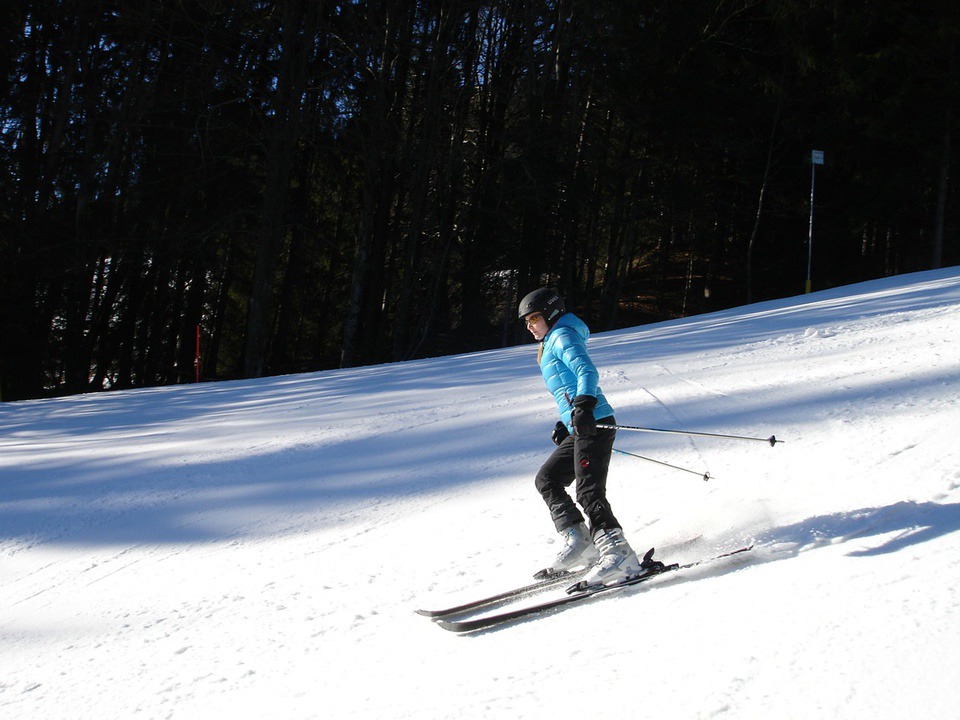Back in the day, learning to ski was for the fearless. You pointed your tips downhill and hoped you’d listened when the instructor explained how to stop. Now, a new teaching style called “terrain-based learning” makes the process much more fun and a lot less scary. New learners – often called “never-evers,” since they’ve never ever been on skis – can learn to ski in a more relaxed, intuitive manner, using varied terrain features instead of steeper slopes. No need to dread the “bunny hill” any longer, as snow elements found naturally on ski slopes are used in a controlled environment.

Terrain-based learning does away with the traditional defensive approach to traditional ski lessons. Instead of starting on a slope, where never-evers are forced to immediately brace for a fall, new skiers are taught to respond to the feel of various terrain features in a primarily flat space. This allows for an entirely different, more responsive body stance. Instead of learning how to slow and stop before learning any other skill, skiers are taught to shift balance, feel their edges, and respond to the snow while they are relaxed. In other words, it’s all about responsive skiing instead of defensive skiing.

Terrain-based learning is not a ski style you can teach yourself, as it requires specially-designed terrain features made of snow, plus qualified instructors. The good news: many ski schools are adopting terrain-based learning in place of traditional ski instruction methods, so skiers can expect to find the new approach at the resorts they already frequent, for no discernable price difference.
terrain-based learning is all about the snow features, designed by ski school instructors and created by talented snow grooming teams. The main features of terrain-based learning include:
Rollers: Rollers are exactly what they sound like: gentle waves on the snow. The up and down movement required while sliding over rollers teaches skiers what flex feels like in their skis, and teaches balance as weight is shifted forward and backward. Instructors can use the rolling movement to illustrate how skis respond better when weight is shifted forward, instead of back.
Banked turns: Banked turns sound intense, but actually assist never-evers in making their first cuts on the snow. These gentle banks allow skiers to link their first turns, assisted by the snow bank to guide the skis. Without banks, the skier has to know how much pressure to put on the downhill ski, a skill that takes practice (and yes, a few falls). The banks also help control the skier’s speed.
Pump tracks: Pump tracks combine rollers with banked turns, helping skiers to combine their newfound skills of balance and linking turns. As never-evers navigate the track, they experience shifts in speed as they rise over bumps and slow naturally for turns.

This Retro WON first appeared January 5, 2018.
The Women's Outdoor News, aka The WON, features news, reviews and stories about women who are shooting, hunting, fishing and actively engaging in outdoor adventure. This publication is for women, by women. View all posts by The WON